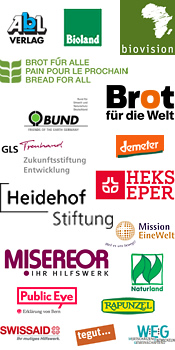Nachricht
14.02.2019 | permalink
69.8 million hectares farmed organically worldwide in 2017

Organic farming is on the rise across the globe. A total of 69.8 million hectares were farmed organically at the end of 2017, representing a growth of almost 11.7 million hectares or 20% compared to the previous year. These are the latest figures of the report “The World of Organic Agriculture” published by the Research Institute of Organic Agriculture (FiBL) and IFOAM – Organics International. The study collects data on 181 countries with organic farming activities. Australia has the largest area farmed organically with 35.6 million hectares, followed by Argentina with 3.4 million hectares and China with 3 million hectares. Due to the large organic area in Australia, almost half of the global organic agricultural land is in Oceania (35.9 million hectares), followed by Europe with 21% and Latin America with 11.5%. Currently, only 1.4% of the world’s agricultural land is organic, but many countries have far higher shares. The three countries with the largest shares are Liechtenstein (37.9%), Samoa (37.6%) and Austria (24%). In Estonia, 20.5% of the farmland is organic and in Sweden and São Tomé and Príncipe, the figures are 18.8% and 18% respectively. In fourteen countries, 10% or more of all agricultural land was under organic management in 2017.
According to the report, there were 2.9 million organic farmers in 2017. Around 40% of the world’s organic producers live in Asia, followed by Africa (28%) and Latin America (16%). As in previous years, the country with most organic producers was India (835,200), followed by Uganda (210,352) and Mexico (210,000). Consumer demand for organic products is also increasing across the globe. Global retail sales of organic food and drink reached 97 billion US dollars in 2017, up from 89.7 billion US dollars in 2016. The countries with the largest organic markets were the United States with 40 billion euros, followed by Germany (10 billion euros), France (7.9 billion euros) and China (7.6 billion euros). The top buyers of organic food worldwide live in Switzerland. Swiss consumers spent 288 euros per person on organic products in 2017, while consumers in Denmark spent 278 euros and people in Sweden 237 euros. Looking at the shares the organic market has of the total market, the winner is Denmark with a share of 13.3%, ahead of Sweden with 9.1% and Switzerland with 9.0%.
“This publication shows our ongoing engagement with transparency in the organic sector,” FiBL director Prof Urs Niggli and IFOAM Executive Director Louise Luttikholt write in the foreword to the report. They stress that it also demonstrates the contribution of organic agriculture to the Sustainable Development Goals set by the United Nations. “Given that organic agriculture touches on almost all of the goals, this book not only shows the land area, number of producers and market figures; it also highlights the contribution of organic agriculture to tackling climate change, ensuring food and nutrition security, halting biodiversity loss, and promoting sustainable consumption,” they conclude. (ab)

